Stay in the know on all smart updates of your favorite topics.
To keep Amsterdam liveable the municipality collaborates with its citizens. On average Amsterdam’s population grows with 10.000 people a year. This small big city has a density of 5065 people per square km, over 180 different nationalities. 19% of the total Dutch GDP is earned in the Amsterdam Metropolitan Area. Between 2015 and 2016, the amount of tourists in Amsterdam increased by 7%. To keep Amsterdam’s 162 canals, monumental centre and residential areas liveable, innovative initiatives are required. Share your innovative concepts and ideas here!
Local Inclusive Future Energy (LIFE) City platform

Amsterdam Zuidoost will build a large amount of new homes in the near future. This will will demand more capacity from the electricity network. With an increasing demand the energy network either needs investments to expand the capacity of the network, or we can explore smart solutions in the field of energy management.
LIFE City Platform
Together with the expected expansions of the network, smart management of energy at area level can help prepare Amsterdam Zuidoost for the future, without unnecessary investments in the current energy grid. The LIFE platform offers users the opportunity to make choices about energy exchange or storage based on economic motivation, sustainability or to support the energy grid. Futhermore, the project ensures that the energy that is generated in Amsterdam Zuidoost - and not immediately used - can be stored locally, such as in the Johan Cruijff ArenA battery.
'Ditgital twin'
An important part of the LIFE platform is the development of a “digital twin”. This digital twin is a digital representation of the ArenApoort area, in which the relevant buildings and energy infrastructure are simulated. All kinds of experiments and adjustments can then be carried out in this digital twin, such as adjustments to electricity prices and rates and the integration of more sustainable energy generation. This allows smart area-based energy to be exchanged after the optimal mix has been calculated using measurement data and artificial intelligence.
Want to know more about this electricity grid-friendly and community inclusive innovation to contribute to the energy transition? Visit our website>>
Energy Lab Zuidoost

Amsterdam Zuidoost aims to be energy neutral by 2040. To reach this goal, significant steps need to be taken. Not only do we need new technologies, there is also a need for smart ways to organize the transition, and for adaptations to our lifestyle. This requires cooperation among many different parties. Both from the government and residents, as well as from companies and researchers. Energy Lab Zuidoost brings these parties together.
Energy Lab Zuidoost
The Energy Lab Zuidoost is an initiative of the AMS Institute, the City of Amsterdam and the Urban Energy Institute of TU Delft. By experimenting together in different ‘Living Labs’, they develop and test new innovations in a real-life environment. This helps understand what works and how to scale and implement these innovations in Amsterdam Zuidoost and other metropolitan environments.
The Energy Lab Zuidoost ensures the exchange of knowledge between different projects, organizations and disciplines. It connects scientific expertise to the urban challenges in Zuidoost and brings together academics from various disciplines. The ambition is to share the knowledge, so the innovations can be applied throughout Amsterdam and beyond.
Energy Lab Zuidoost focuses on three main topics around which they develop pilots and experiments:
- The sustainable renovation of homes
- Low temperature heat networks
- Local smart energy systems
For more info see the full animation about Enegry Lab Zuidoost (Dutch with English subtitles) on the AMS website >>
Interactive Sound Garden @ Marineterrein
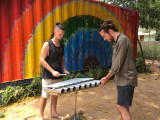
Hello smart city lovers! What do you think of this proposal for a Sound Garden @ Marineterrein?
We are proposing a welcome and open place of musical exploration and reflection for all Amsterdammers and visitors to Marineterrein.
It invites you to stay and play, to enjoy the wonder of sounds, and to discover music inside yourself.
Observatory of ideas

Solidary, Creative Economy, for Communities and With Communities!
Thousands of other initiatives around the world!
(Ana Luíza Farage Silva)
At some point people realized that they needed each other to do something other than "subsist". From there, they decided to organize themselves in something called communities in order to improve their lives and practice a good "survival". Over time, they realized that the law of the strongest could hurt and decided to affirm social contracts to live together and in harmony.
Some people understood that they should give up some freedoms for this, others did not. Over time, these communities have been forming their stories, generating their identities and dynamizing their cultures. When communities became organized, they started to be called societies.
How many societies do we know? How many societies do we live in? Within these social contracts, many have little and few have a lot. Much what? Wealth? Yes, few have access! Access to quality education, decent health, respectful housing, nutritious food and so on.
How many can do what they want and how many cannot do what they need? It is in this concern that I perceive (as several others have already noted) that everything tends to come together. The better structured places attract bigger investments that generate bigger chains that attract even more investments and keep developing (or just growing) more and more. The point is that where there is little, little remains.
Does it have to be this way? If you were a government official and were going to choose to develop a state, would you give growth incentives to regions that are already more advanced or encourage the development of those that still have almost nothing? The prudent answer may be: "it depends" ... if you just want to develop faster, it may be easier to encourage the growth of the wealthiest regions.
After all, their chain is greater and they can “pull” other cities in the process of growth. But if you think about it on the other hand, you can see that there is no certainty that the poorest cities will be fostered by the richest. Will the access ever get there? With this in mind, several concepts and practices have been developed. Have you ever heard of Creative Economy? Basically, knowledge, creativity and intellectual capital are the production factors of this economy.
In this process, cultural production is used as a historical factor in the formation of identity and income generation in that community. In other words, a new look at the solution of the structural problems of society, the economy and culture are sought from the identity of that population.
In other words, development is sought from the convergence and respect for the roots of that people's history with cultural, social and economic objectives. Discussions, initiatives and studies have been taking place throughout Brazil with the aim of expanding this concept: the first International Forum of Creative Cities in Rio Quente took place in September 2013 http://rioquente.go.gov.br/cidades-criativas/, the IV Minas Gerais Meeting of Public Administration, Solidarity Economy and Social Management (IV EMAPEGS) addressed this theme in Viçosa this year http://www.emapegs.ufv.br/ and so on.
In addition, another concept has been addressed, created and practiced. Have you heard of Solidarity Economy? The concept of solidarity started to be guided at the end of the 18th century, but it has not yet been completely assimilated to the market. In this context, solidarity economy means interdependence and is based on the principles of cooperation, self-management and brings an economic dimension to society. In other words, we think of a market geared towards people, not people geared towards the market.
Despite the various difficulties faced by the Solidarity Economy, such as mapping, production flow, obtaining credit, advice and collective work, many advances and initiatives have taken place in Brazil. Have you heard of the Center for Solidarity Economy of Tocantis? UFT's NESOL? They have been working hard on this process: http://www.fapto.uft.edu.br/conhecimento/index.php/uft/14-nucleo-de-economia-solidaria-da-uft-nesol. Many communities have also realized that they live on the job, but remain in poverty. So they decided to challenge all the pre-established and create social currencies. That is, they realized that they had to develop some way to encourage the money to circulate more within the community itself, with the possibility of exchanging it for the real. Some initiatives have been implemented in Brazil. The first was Banco Palmas, at the Palmeiras complex in Fortaleza (CE). http://www.bancopalmas.org.br/oktiva.net/1235/nota/12291. Today there are more than 110 community banks, a chain, across Brazil. Several other initiatives in the world have been taken, but it is clear that challenges abound.
The 100 Intelligent Cities Challenge

The 100 Intelligent Cities Challenge (ICC) is a European Commission initiative that supports 136 cities in using cutting-edge technologies to lead the intelligent, green and socially responsible recovery. The ICC cities and their local ecosystems will be engines for the recovery of their local economy, create new jobs, and strengthen citizen participation and wellbeing.
The ICC is part of a wider EU support system that recognises the importance of delivering on the promises made by the European Green Deal, the digital strategy, and other EU policies. It looks to move towards a more digital, service-oriented and low-carbon economy, supported by a knowledge-based society, that enables circular economy systems through ‘local value loops’, evidence-based reskilling, and sustainable investments.
Participating cities receive one-to-one strategic advice from international experts on fine thematic strands: green economy and local green deals, improving the citizen participation and the digitalisation of public administration, green and digital transition in tourism, resilience of local supply chains, up- and reskilling of the workforce. ICC Cities are also supported by transversal services on access to data, access to finance and through a marketplace full of innovative solutions.
The Amsterdam Region, represented by Amsterdam Economic Board and Amsterdam Smart City (ASC) is one of the ICC mentor regions, alongside European mentor cities Aarhus, Antwerp, Barcelona, Espoo, Hamburg, Nice, Porto, Rijeka and international mentors Medellin, Singapore and Toronto. By participating in the ICC, the Amsterdam Region will share its experience and learn from other best practices related to multi-stakeholder collaboration, innovation ecosystems, circular economy and citizen participation.
ICC Updates:
• Launch of 100 Intelligent Cities Challenge
• ICC Challenge Mayors’ Summit
• Launch of ICC Renovation Action Group
• Public Kick-off 2nd ICC City Lab
• ICC - 3rd City Lab
• 200 Intelligent & Climate Neutral Cities Jam
• ICC - 4th City Lab
• Invitation to co-create European transition pathways for more resilient, greener and digital industrial ecosystems
• ICC - 5th City Lab
• Developing circular and sharing economy practices in cities
• The 100 Intelligent Cities Challenge: Looking Back & Looking Forward (End of Phase 1)
52 weken duurzaam, we gaan het gewoon doen.
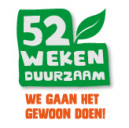
52wekenduurzaam nodigt je uit om je eigen leven stap voor stap duurzamer te maken. Een jaar lang iedere week een kleine verrassende en duurzame stap. Om te zien of het bij je past. Word je er gelukkig van, dan hou je het vol. Zo niet, dan skip je het. Wij onderzoeken wat er wel kan. Uitdagend, leuk, leerzaam en gratis. Loop je een stukje met ons mee?
Wij denken dat we met elkaar op een gemakkelijke manier veel duurzamer kunnen worden. Door elkaar te inspireren en uit te dagen. Door leuke en verrassende dingen te onderzoeken. Om zo je eigen versie van een duurzame leefstijl te ontwikkelen. We streven naar 5000 deelnemers in 2021. Hoe meer mensen meedoen, hoe beter. Voor onze Totale Impact Score, maar ook voor jezelf, want samen is veel leuker dan alleen. Dus geweldig als je nu al je gezin, je buren, vrienden en collega’s inspireert om ook mee te doen.
Wicked Problems
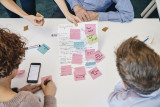
Te wicked? Niet voor ons.
Wij werken allemaal aan urgente, complexe, maatschappelijke uitdagingen. Issues die schier onoplosbaar lijken, van dilemma’s en paradoxen omgeven, nog niet duidelijk hoe het moet. Wel is duidelijk dát het moet, dat we elkaar nodig
hebben en dat we er NU aan moeten beginnen. Om met de woorden van Jan Rotmans te spreken; we leven niet in een tijdperk van verandering maar in een verandering van tijdperk. En hier hoort een nieuwe gereedschapskist bij.
En of je nou aan energietransitie werkt, andere mobiliteitssystemen, creëren van waterstofhubs, peer to peer autodeelsystemen, het maakt niet uit, we zien dat al deze opgaven op enig moment tegen gelijksoortige barrières aanlopen. Op samenwerking, financiering, privacy, onvoldoende aansluiting op de maatschappij, om maar een paar voorbeelden te noemen.
Unieke samenwerking
Als Amsterdam Smart City netwerk willen en kunnen we deze opgaven niet laten liggen. Door het bundelen van onze kennis en expertise kunnen we als netwerk iets unieks bieden en de wil en durf tonen om deze barrières te doorbreken. De betrokken partners die dit uitdenken en begeleiden zijn RHDHV, Kennisland, Drift, NEMO, Arcadis, Alliander, HvA en Metabolic. Zij bundelen hun expertise en ervaring om de echte vragen boven tafel te krijgen, tot nieuwe manieren van samenwerken te komen en barrières te doorbreken. We richten ons met name op de start van de samenwerking. Gezamenlijk ontwikkelen we een ‘wicked problem aanpak’. Op een nieuwe manier, lerend door te doen, exploratief.
Waar moet je aan denken?
Wat is eigenlijk het echte probleem? Wiens probleem is dit? Hoe kijken anderen er tegenaan? Welke andere partijen lijken nodig? Hoe vind je ze? Hoe ga je om met eigenaarschap en botsende frames? Hoe zorg je dat je al in
een vroeg stadium de maatschappij (bewoners, ondernemers, werknemers, etc) betrekt en hun ervaringen in het project trekt? Het wicked problem team zet nieuwe methoden in voor het beantwoorden van deze vragen. En het creëren van de benodigde commitment om het vraagstuk aan te pakken. Niets staat van te voren vast, want we passen ons aan aan wat we tegenkomen. Met elkaar ontwikkelen we een nieuwe aanpak om de barrières te doorbreken.
Isolde de Ridder Sieraden

At Isolde de Ridder Sieraden, founded by Isolde de Ridder – Le Creurer in 2017, creating high-end jewellery with the greatest of care for both people and planet, is our mission. We strive to make the world more beautiful with our unique jewellery. Our unique pieces are crafted by hand in the Netherlands. Jewellery that give discarded metals and other materials a second life and that contribute to a better world for generations to come.
Upcyclecentrum Almere

In the Upcyclecentrum we make the circular economy and the upcycle process visible and tangible. We don’t do this alone. Our residents provide us with raw materials by properly separating their waste, the entrepreneurs (startups) upcycle these raw materials into new products and inspiring workshops are organized in our circular designed experience center. Waste = raw material in the circular economy; this is the central theme of all our activities.
Follow us on instagram on www.instagram.com/upcyclecentrum
#upcyclecentrum
3-CYCLE
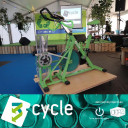
We are 3-CYCLE, a new upcycling project by Erik Fakkeldij (The Botfactory) and Joost Bosker (Oerz). We joint forces in 2019 to create new products from used pieces of plastics and metal. And... to make this a true dutch innovation, we use a setup with a bike to do the first steps of the upcycling process!
But that's not all... we do this by giving workshops and presentations to kids and the public to create more awareness. Our aim is to show that waste is not only bad for the environment, but it also means missed opportunities for reusing the waste and upcycling it into new products.
We believe this type of education is key for engaging the public, while making a
difference at the same time.
Transition from Smart to Inclusive city

The primary objective of this research project is to enhance an understanding of the concept of inclusion and its criteria in Smart city discourse. The research ambition is applying the result as a tool for benchmarking inclusive smart cities, which can assess and improve them. To apply the result, we aim to work with cities like Amsterdam, The Hauge, and Rotterdam.
Oceanic Face shields
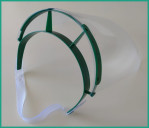
Personal protection products made with high plastic recycling content (all green parts) Other parts still work in progress
OCEAN (and EAR) SAVERS
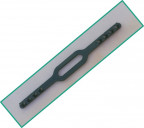
Product made with 100% recycled plastics from the maritime industry (obsolete fishing gear and ropes)
EC-Link Platform

You would like to connect with Urban Environmental Sustainability practitioners and researchers in China and exchange your approaches to green transport, clean energy, compact urban development, water and solid waste management, green buildings and municipal finance? Then sign up to the EC-Link platform! The platform links Eco Cities across Europe and China, offering inspiring examples from both sides of Eurasia and enabling direct contacts to the innovators. With the help of an integrated translation tool, posts can be translated into Chinese and English with just one click. Use of the platform is free of charge: http://eclink.org/bbs/#/?lang=en
A description of how the platform works can be downloaded here: http://eclink.org/ec_platform/upload/document/EC-Link_Users'%20Guide-EN.pdf
Urbact Civic eState and the Amsterdam Whole Commons Catalog
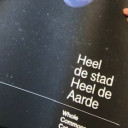
In the Urbact Civic eState project Amsterdam works together with several European cities to locally adopt progressive policies on the urban commons. As a first step the Amsterdam Foundation Onschatbare Waarde ('invaluable value’), together with Amsterdam commons initiatives, made the beautiful catalog Heel de Stad, Heel de Aarde (the whole city, the whole earth) during the past 6 months. A guide with all kinds of tips and tools, ideas and projects, people and books for everyone who is or wants to work collectively.
Heel de Stad, Heel de Aarde is inspired by the Whole Earth Catalog. Like in the original Whole Earth Catalog, experts and doers share reviews of all kinds of books and practices. The Catalog - in short - shows the positive and practical ways in which we can shape the future and shows that we not only have to look at the government or the market, but also start ourselves: in commons!
The Catalog is available online in Dutch via http://heeldeaarde.net - and you can also request one hard copy (with poster). And via https://wijamsterdam.nl/verhalen/lege-supermarkt-ga-naar-het-voedselbos you will find an interview with Natascha, the editor in chief, and a short introduction video about the commons in Amsterdam.
<http://heeldeaarde.net/> and <https://urbact.eu/civic-estate>
[►
Heel de aarde, heel de stad
Whole Commons Catalog
Gemeente Amsterdam Vimeo](https://vimeo.com/434468746)
Marineterrein Amsterdam Living Lab

Like cities worldwide, Marineterrein Amsterdam faces major challenges. For example in mobility, circularity, and (ethical) digization. To come up with innovative solutions, there is a need for physical location, knowledge and collaboration. Marinetterein Amsterdam Living Lab (MALL) is a place where this happens.
The Marineterrein uses the terrain as experimental environment for its own development. The partners work together to stimulate collaboration between companies, scientists, students and government agencies. This creates (scalable) experiments that are tested on the grounds, and ultimately applied in urban environments.
MALL is a place to research, experiment and test in a real-life setting. To achieve this MALL partners bring together their expertise, network, and communities in the field of research, innovation, urban development and experimentation at this unique location in Amsterdam.
Everyone is welcome to test at the Marineterrein. Given the special location, high demands are made on parties who come to develop and test on the Marineterrein. In addition to thematic alignment with the themes of the parties, careful consideration is given to whether the applications are innovative, whether they ensure connection between people and knowledge and to opt for a clear focus within a relevant issue.
Current Experiments
• CINDERELA | CINDERELA is a demonstration plant that transforms urine into nutrient-rich fertilizer. The plant consists of a refurbished shipping container – containing a laboratory and two urine-diverting toilets – and an adjacent greenhouse which also serves as a meeting space.
• Roboat | autonomous floating vessels that create a more dynamic urban infrastructure, and provide new ways of transporting people and goods.
• Space for Food | the European Space Agency (ESA) explores the potential and scalability of applying space technology for applications in urban contexts.
• Smart Roof 2.0 | an innovative, lightweight, blue-green roof equipped with a Permavoid drainage layer that stores rainwater and provides plants with water during dry spells.
Curious to see what else is being tested? Click here for a full list!
Open Calls
• Amsterdam Drone Lab | drone flight testing facility at the heart of the Amsterdam city centre.
Want to start testing in the heart of Amsterdam?
MALL provides a publicly accessible but privately governed site in the heart of Amsterdam. This ensures you to test and implement solutions in the public space under credible circumstances with less restrictions. From quay walls, to buildings and roofs. The infrastructure of the site has been set up in such a way that experiments can be easily set up.
Submit your experiment!
Collaboration
MALL is a collaboration between Marineterrein Amsterdam and Amsterdam Institute for Advanced Metropolitan Solutions, with partners Amsterdam Smart City and NEMO Science Museum.
Hollandse Luchten

Via diverse pilots, burgermetingen en evenementen brengen we de leefomgeving van Noord-Holland in kaart en zetten we deze gezamenlijk om in actie. Door data samen te verzamelen, zullen we ook samen op zoek gaan naar oplossingen. Deze aanpak noemen we citizen sensing. Hollandse Luchten maakt gebruik van experimentele technologie en onderzoekt de waarde van nieuwe sensortechnologie voor inwoners van Noord-Holland.
Via diverse pilots, burgermetingen en evenementen brengen we de leefomgeving van Noord-Holland in kaart en zetten we deze gezamenlijk om in actie. Door data samen te verzamelen, zullen we ook samen op zoek gaan naar oplossingen. Deze aanpak noemen we citizen sensing. Hollandse Luchten maakt gebruik van experimentele technologie en onderzoekt de waarde van nieuwe sensortechnologie voor inwoners van Noord-Holland.
Pilots
De belangrijke doelstelling van de pilot opzet van Hollandse Luchten is het betrekken van burgers rondom data verzameling om zo op basis van nieuwe inzichten een leefbare en duurzame samenleving mogelijk te maken. Door open innovatiemethoden in te zetten in combinatie met het gebruik van betaalbare open hardware en nieuwe digitale mogelijkheden, worden burgers betrokken en ontwikkelen ze handelingsperspectief in het aanpakken van belangrijke maatschappelijke uitdagingen. Hollandse Luchten maakt hierbij gebruik van experimentele technologie en onderzoekt de waarde van nieuwe sensortechnologie voor inwoners van Noord-Holland.
Partners
In dit project onderzoeken we in opdracht van Provincie Noord-Holland hoe door middel van open source en betaalbare meetsensoren, burgers meer inzicht kunnen krijgen op de luchtkwaliteit in gebieden waar de leefkwaliteit onder druk staat. Hier werken meerdere partners aan mee o.a.: RIVM, Omgevingsdienst IJmond, Omgevingsdienst Noordzeekanaal, TATA Steel, Smart City Haarlem, Gemeente Zaanstad, Gemeente Haarlem, Buiksloterham Circulair, Brak! IJmuiden en Waag.
Citizen Sensing
Citizen sensing is een nieuwe manier om de leefomgeving in kaart te brengen. Een belangrijk onderdeel van deze leefomgeving is de luchtkwaliteit. Traditioneel gezien wordt luchtkwaliteit gemeten door officiële meetstations van partijen zoals het Rijksinstituut voor Volksgezondheid en Milieu (RIVM) en de GGD. Deze meetstations geven nauwkeurige maar plaatsgebonden data. Luchtkwaliteit kan echter sterk verschillen per locatie en tijdstip. Omdat er relatief weinig meetstations zijn wordt de luchtkwaliteit op veel locaties of geschat via berekeningen en voorspellingen of niet gemeten waar dat wel belangrijk is. Hoe is de luchtkwaliteit van een basisschool of voetbalclub naast een drukke verkeersweg, bijvoorbeeld, of voor mensen die in de buurt van een fabriek wonen?
Citizen sensing probeert dit gat op te vullen met burgermetingen van luchtkwaliteit. Met goedkope en toegankelijke open-source sensoren kan de luchtkwaliteit door heel het land in kaart gebracht worden. Op deze manier kan citizen sensing lokale problematiek aankaarten en biedt het data om verandering teweeg te brengen. Met data kan bijvoorbeeld een nieuw gesprek op gang gebracht worden dat gebaseerd is op een beter inzicht van de situatie. Ook kunnen oplossingen beter worden afgestemd op de werkelijke lokale situatie. Het RIVM onderzoekt dit van hun platform Samen Meten aan Luchtkwaliteit. In de volgende video leggen ze uit waarom dit belangrijk is.
Waag en Citizen Sensing
Voor Waag is Hollandse Luchten een belangrijk project binnen haar onderzoek naar burgergedreven dataverzameling over de kwaliteit van leefomgeving. Waag deed hier eerder in Europees verband onderzoek naar onder de noemer Making Sense. In samenwerking met o.a. Barcelona, Pristina (Kosovo) en Amsterdam werd in negen pilots gekeken naar dit soort onderzoek. Over dit project verscheen de documentaire: Citizen Science Revolution.
Outdoor Office Day

In het Nieuwe Werken staan gezondheid en vitaliteit centraal. Voor iedereen is bewegen en werken in het stedelijke groen een ‘must’. Wist je dat wetenschappelijke onderzoeken hebben aangetoond dat een groene omgeving bij mensen creativiteit stimuleert, de concentratie verbetert en een rustgevend effect heeft? Buiten bewegen is noodzakelijk voor je gezondheid. Het sluit perfect aan bij de breed gevoelde noodzaak om het werkgeluk en het welzijn van medewerkers te verbeteren.
Staat het idee van een #OutdoorOfficeDay je wel aan?
Verlang je ook naar een werkoverleg buiten in het stedelijk groen, in de omgeving van je kantoor? Wil je bij voorkeur je plannen wandelend bespreken met een collega? Of gewoon ergens in een park in de buurt een werklunch organiseren? Of het liefst dat belangrijke telefoongesprek buiten voeren?
Initiatiefnemer Nature Desks wil ook andere mensen, organisaties en bedrijven in Nederland uitnodigen om ook dit jaar op 23 juni hun ‘werkplek’ letterlijk buiten in het stedelijk groen te plaatsen.
Ook jij kunt aan de slag met deze landelijke Outdoor Office Day! Ga naar buiten. Maak je collega’s enthousiast en verzin een gaaf idee voor de #outdoorofficeday!
Urban Nature Amsterdam

#UrbanNatureAmsterdam, de eerste papieren groene en blauwe kaart van de stad.
Amsterdam is veel meer dan een verzameling straten, gebouwen, cultuur en economische activiteit. Het doel van deze stadskaart is om te laten zien dat we leven temidden van parken, (binnen)tuinen, plantsoenen, natuurspeeltuinen, groene daken, meren, grachten, rivieren, polders en bossen. Een uniek groen en blauw stadslandschap dat we ongemerkt delen met meer dan 10.000 soorten flora en fauna.
Stay up to date
Get notified about new updates, opportunities or events that match your interests.


